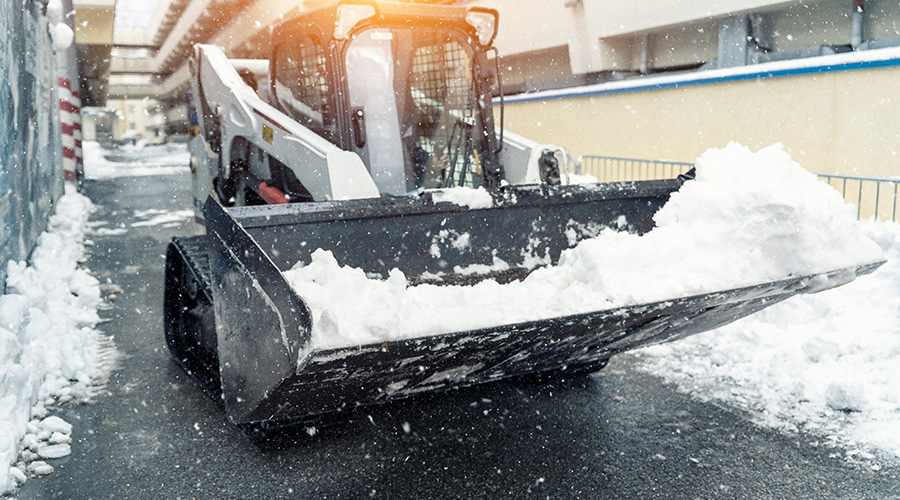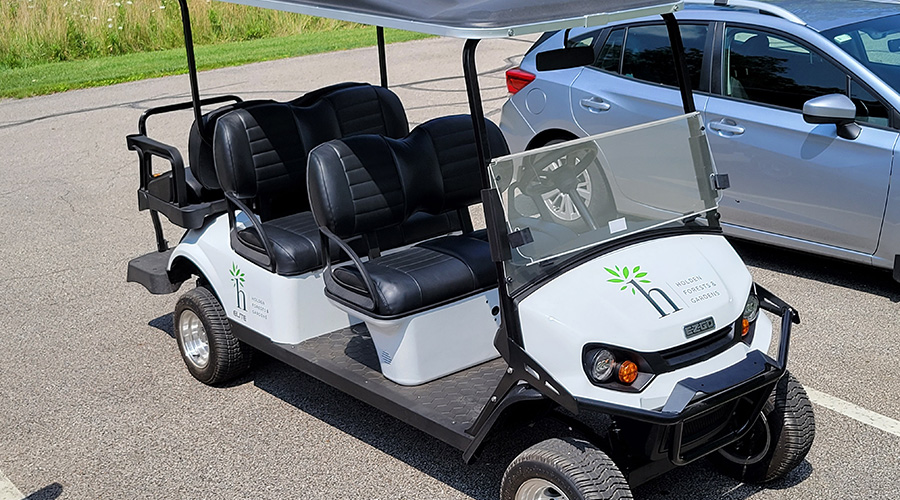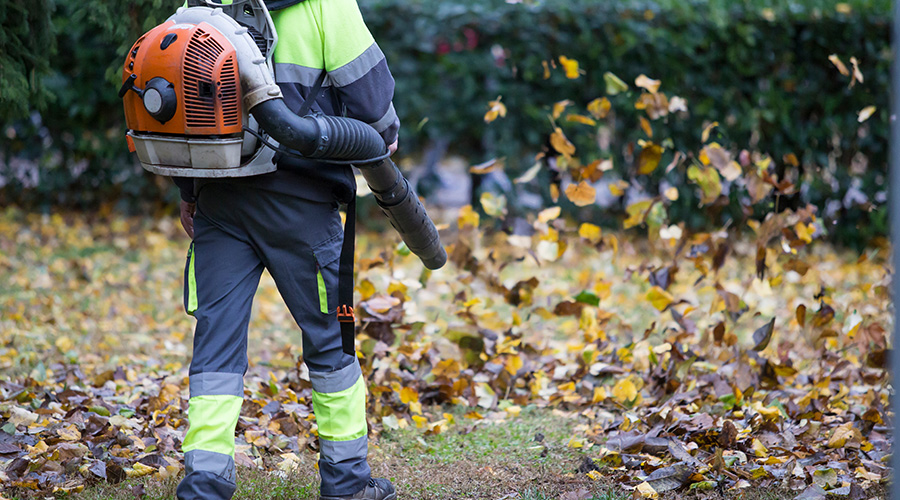 Grand Geneva Resort & Spa in Lake Geneva, Wisconsin, requires unique mowing needs on a 1,300-acre property that includes two golf courses.Grand Geneva Resort & Spa
Grand Geneva Resort & Spa in Lake Geneva, Wisconsin, requires unique mowing needs on a 1,300-acre property that includes two golf courses.Grand Geneva Resort & Spa How to Create Mower Specifications to Meet Different Needs
Grounds managers deliver their mower recommendations for appealing, well-maintained grounds.
Whether a landscaping operation is at a church, resort, or parks district, mowers are workhorses for many grounds managers. But there is no one-size-fits-all approach to keeping grass maintained. Each operation needs the correct mower mix to get the job done right.
Grounds managers have an array of options when upgrading or adding to their mower fleets. From wide-area and zero-turn options to walk-behind and stand-on machines, trying to match the machines with institutional and commercial facilities’ needs can be a challenge.
Three facilities, three approaches
In Wisconsin’s heartland sits a church known as Elmbrook Church-Lake Country. The evangelical church attracts hundreds of churchgoers every Sunday, and during the week, the facility holds church staff, elementary students who attend an on-site Christian school, and participants in other events.
This active community church is well-known for its many offerings, but its pristine acreage, maintained by facilities specialist Larry Brabazon and a corps of volunteers, also commands attention. The church building sits on 35 acres, with an expansive pond in front, a rolling hill near the highway, and a lush lawn anchored by towering trees.
“We maintain close to 20 acres of grass around the building and the pond and inside the wood line,” Brabazon says. “The pond is always a hazard, as is the hillside by Highway 83, where you’re constantly running at a 35-degree angle. We’ve got islands to mow in the parking lot and, of course, rocks to navigate around. You’ve got to be careful.”
Brabazon relies on two zero-turn commercial mowers for large open spaces, a walk-behind mower to trim around trees and other obstacles, and a stable of weed trimmers to maintain the grounds.
James Kim, park superintendent for the Vernon Hills Park District in suburban Chicago, says he’s also challenged by mowing work. His crews maintain 200 acres of parkland in the city.
“Our in-house staff mows half of it, while contractors mow the rest,” he says.
To maintain the parkland areas, the operation depends on four trim mowers for hard-to-reach areas and three pull-behind mowers that are 15-17 feet wide. Contractors use stand-up mowers to cut grass near playgrounds.
“We need a variety of mowers in our operation,” Kim says. “We don’t manage wide open spaces. There are trees, paths, benches, field fencing, playgrounds, restroom buildings, and tennis courts in our way. Our bigger mowers can do some of our larger athletic fields with no obstructions. Our trim mowers go in and trim around trees, fence lines and do smaller spaces.”
Grand Geneva Resort & Spa in Lake Geneva, Wisconsin, sits on 1,300 lavish acres that includes two championship golf courses, rolling hills and an expanse of green grass. This resort also has unique mowing needs.
“Our goal is to keep Grand Geneva Resort & Spa’s grounds well maintained to the resort’s four-diamond standards at all times,” says Jim Crothers, facilities director at Grand Geneva. “We have 22 associates that maintain our golf courses and seven associates that maintain the grounds and landscape. While there is no unique mowing situation, the mowing of fine turf on the greens, fairways and tees takes some training.”
The golf course relies on specialty mowers to maintain greens, tees, fairways, roughs and green surrounds.
“We use reel mowers for the greens, tees, and fairways,” he says “We use deck mowers for the roughs, green and tee surrounds. On the hotel grounds, we use deck mowers.”
Mower considerations
Brabazon, Kim and Crothers share their insights and top considerations for picking the most appropriate mowers for an operation. When asked about top criteria for mower selection, Kim rattles off three: speed, type — sit-down or stand-up — and service.
“We don’t want a mower that goes really fast because we have some seasonal staff,” says Kim, whose district specifies mowers that go less than 10 miles per hour. “Just because a mower goes very fast doesn’t mean it cuts well. It just means it goes fast and might not catch up with the blades.”
Kim also opts for riding mowers versus stand-up models, noting they have demoed stand-up mowers for in-house staff.
“Though these mowers give a better view and angle of where you’re cutting, our guys are on a mower for six to eight hours a day,” he says. “There’s some fatigue with that. Though you may see less on a riding mower, you’re definitely more comfortable.”
Contractors mowing playgrounds, which are up to 2 acres, use stand-up mowers. Kim says the mowers get into tighter spaces and provide 360-degree views of playgrounds filled with children. Should the department ever bring playground mowing in-house, Kim says they will add stand-up mowers.
“Stand-up mowers are also lower to the ground so you can see more obstacles in your point of view,” he says.
Though most of the park district’s maintenance takes place in-house, Kim recommends choosing a dealership that offers fast turnaround times for complicated repairs.
“The mowers may cost less from a manufacturer or dealer farther away, but if it takes three weeks to get parts or to service a mower, it’s better to go with a nearby dealer who costs a bit more,” he says.
Crothers agrees, noting the resort works with a “dealer who stands behind their product and provides the fastest service regarding turnaround time.”
Brabazon adds that with fewer acres, it might be tempting to save money and buy a residential mower.
“Don’t,” he says. “You want a commercial-grade mower. Even with 20 acres, we’re putting eight to nine hours a week on the two mowers. You want a heavy-duty mower that will withstand putting on 3,000-plus hours over a lifetime.”
Crothers adds, “Select equipment for its versatility and ability to be used in most areas.”
The case for zero-turns
Zero-turn mowers place the mowing deck at the front of the machine and offer a zero-turn radius that lets operators cut close to objects, such as trees and buildings. Crews can cut large swaths of grass in less time, and the area needs less trimming and mowing when they finish. Most zero-turns come in cutting widths that range from 36 inches to 72 inches.
“We went with a 60-inch zero-turn,” says Brabazon. “We needed a bigger cut than a 48-inch. We use the zero-turns for everything. Though I have a walk-behind mower, I haven’t used it this year. We put gravel around the pond. Now I knock away weeds with a weed trimmer. It’s difficult to use a push mower on uneven ground. It’s hard on the legs and the body.”
But zero-turn mowers have a downside.
“If you mow a pattern in a zero-turn on the same spot, over and over, week after week, you will create a dead spot,” Kim says. “We had to teach people not to pull handles as hard as they do and to make gentle, wide turns or three-point turns.”
Likewise, a zero-turn mower might not work well for a field that needs 50 wide turns.
“I don’t know how much time you’d save by going with a zero-turn,” Kim says.
Engine matters
Until recently, gasoline- and diesel-powered engines represented the only choices for commercial mowers. Now managers can consider more options, including propane engines, gasoline engines in carbureted and electronic fuel injected (EFI) versions.
Brabazon says his church’s new 60-inch, zero-turn mower has a 33 horsepower engine and takes a standard 87 octane gas with ethanol.
“It has plenty of power to spin the blades,” he says. “With a commercial mower, you want an engine that spins blades fast enough to do a nice cut.”
Though EFI options are more fuel efficient, they often add a computer module that delivers other features, such as the ability to lower rpm automatically when the power takeoff is engaged. All three managers caution against choosing a complicated mower or engine. The more bells and whistles a mower has, the more there is to maintain, they say.
“If everything runs on a computer, when it breaks, it has to go to the shop,” Brabazon says.
Vernon Hills uses mowers with EFI engines, though Kim gets worried when a mower relies on an electronic keypad to start the engine without a way to bypass it.
“Sometimes we joke, we wish we could go backward and make mowers simpler, even if they are all belt driven. They are just easier to repair,” he says.
Propane engines have become more popular options for managers who wish to lower their departments’ carbon footprints. Kim says he considered propane engines for Vernon Hills, but village leadership worried about putting a large propane tank in town.
“Our risk management company also wanted protocols in place before adding a huge propane tank,” he says. “There were too many hurdles to cross for mowers we use three months a year. It didn’t seem cost-effective or efficient.”
Kim says they also considered diesel engines, but notes “the mowers put out too many emissions.” Instead, Kim’s department keeps emissions in check by observing the amount of gasoline mowers use. If they start to use more gasoline, it signals a need for repair.
“Maybe we need to change the belts, a spindle isn’t working, the blades are not sharp enough, or the person using it is too heavy for the mower,” he says.
Going electric
Mowers powered by electricity are gaining in popularity. These mowers come in all sizes, from push mowers to zero-turn models. Kim and Brabazon say the jury is still out with electric mowers, adding that they will consider them someday but not right now.
Vernon Hills uses rechargeable battery-operated backpack blowers but hasn’t switched to electric mowers. Kim says though batteries last longer on a full charge than they used to, their cost remains far higher than gasoline-powered motors.
“I’m sure the cost will come down eventually,” he says.
Some Illinois villages are requiring electric mowers by 2025, and Kim says Vernon Hills might eventually follow suit. Brabazon says his area has no mandates for electric mowers yet.
Brabazon is unsure if the church is a suitable candidate for electric mowers. The batteries must maintain a charge for up to eight hours, and he worries whether volunteers would remember to charge them.
“Volunteers come to mow when it works into their schedule,” he says. “If someone used the mower and forgot to charge it up, the next volunteer wouldn’t be able to mow. We can’t just tell them to come back tomorrow. And we also need a place to charge batteries. We don’t have one right now.
“We will never rule out electric mowers. We currently run a few hydroelectric mowers. I believe automated mowers, guided by GPS, will become the norm rather than the exception soon, reducing the need for labor.”
Ronnie Wendt is a freelance writer based in Waukesha, Wisconsin. She has written about facility maintenance since 2008.
Related Topics:












